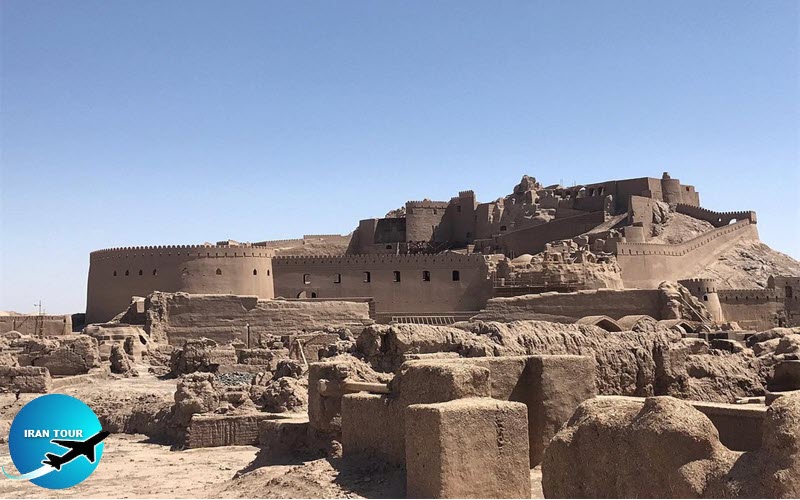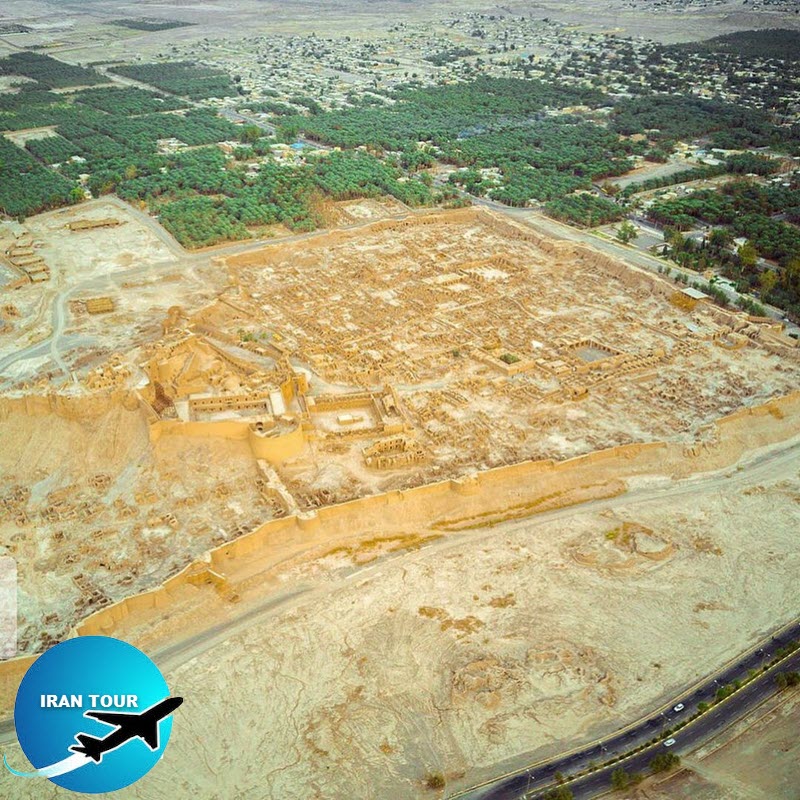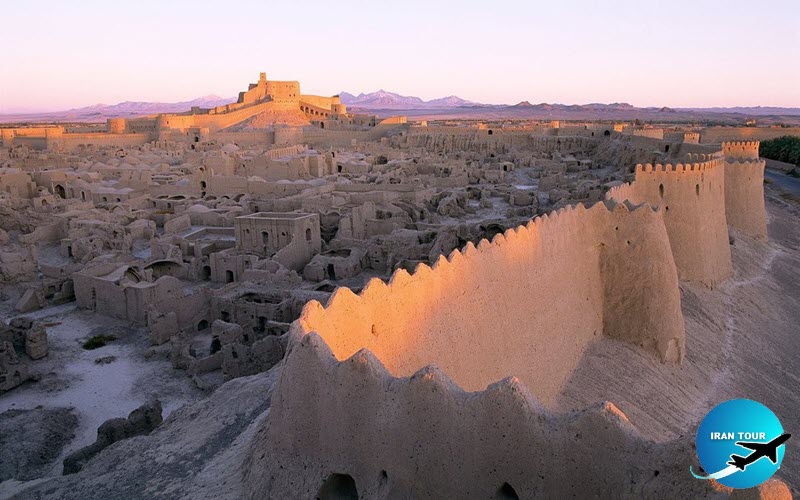Copyright 2020 - 2021 irantour.tours all right reserved
Designed by Behsazanhost
Arg e Bam (Bam citadel)
Arg e Bam or Bam citadel
Arg-e Bam is located east- north of Bam, on the big cliff slop. This castle has been the old city of Bam and was formed from four parts and 38 observation guards towers, the main building materials of this historical monument are plaster clay and straw. Arg-e Bam (Bam Citadel) is the world’s largest adobe structure registered by the UNESCO organization, unfortunately, was damaged in an earthquake in December 2003. Today many experts from all over the world try to reconstruct the citadel. At the present time, even many Iranian and foreign tourists visit the semi-destroyed buildings of the citadel and are attracted, numerous tourists.
 |
A Brief History of Bam Citadel
The Arg-é Bam ("Bam citadel") was the largest adobe building in the world, located in Bam, a city in the Kerman province of southeastern Iran. It is listed by UNESCO as part of the World Heritage Site "Bam and its Cultural Landscape. This enormous citadel on the Silk Road was built before 500 BC and remained in use until 1850 AD. The entire building was a large fortress in whose heart the citadel itself was located, but because of the impressive look of the citadel, which forms the highest point, the entire fortress is named the Bam Citadel. On December 26, 2003, the Citadel was almost completely destroyed by an earthquake, along with much of the rest of Bam and its environs.
Dimensions
Larger than nearby Arg-é Rayen, the area of Bam Citadel is approximately 180,000 square meters, and its surrounded by gigantic walls 6-7 meters high and 1815 meters long, with many as 67 such towers scattered across the ancient city of Bam.
 |
Bam Citadel design and architecture
The citadel of Arg-é Bam: The world's largest adobe structure, dating to at least 500 BCE. The planning and architecture of the citadel are thought out from different points of view. From the present form of the citadel, one can see that the planner(s) had foreseen the entire final form of the building and city from the first steps in the planning process. During each phase of building development, the already-built part enjoyed a complete figure, and each additional part could be "sewn into the existing section seamlessly.
 |
In the architectural form of Bam Citadel there are two different distinguishable parts:
- The rulers part in the most internal wall, holding the citadel, barracks, and mill:
- The part surrounding the ruler's place: consisting of the main entrance of the entire fortress-city and the bazaar alongside the North-to-South spinal axis (which connects the main entrance to the citadel), and around 400 houses with their associated public buildings (such as a school and sport place)
Among the houses three different types are recognizable: - Smaller houses with 2 - 3 rooms for the poor families
- Bigger houses with 3 - 4 rooms for the middle social class, some of which have also a veranda.
- The most luxurious houses with more rooms oriented in different directions are suitable for different seasons of the year, together with a big court and a stall for animals
nearby. There are few of these types of houses in the fortress. All buildings are made of non-baked day bricks: Bam Citadel was probably, prior to the 2003 earthquake, the biggest adobe structure in the world.
 |
security
When the gate of the city was closed, no human or animal could enter. The inhabitants could continue living for a long period of time in isolation as they had access to a well, gardens, and domestic animals inside. When the fortress city was besieged the inhabitants could remain in the city while the soldiers could defend it, protected by high walls and towers.
 |
Air conditioning
Besides the towers and ornamented tops of the high walls on the skyline of the fortress, the wind catchers or wind towers (in Persian: Badgir) are remarkable. They are structures protruding from the buildings to catch the wind and direct it into the buildings. Sometimes the air is passed over a water basin in the building to cool it and remove dust. Different types of wind towers are utilized for different buildings. For example, there are 4-directional wind towers for larger and more important buildings, which are able to catch the wind from different directions, and there are one-directional wind towers for smaller buildings.
2003 Earthquake
The 2003 Earthquake in Bam destroyed more than 80 percent of the Citadel. As a World Heritage site, several countries are cooperating in the reconstruction. Japan Italy and France are among the countries that cooperated from the beginning. Japan has granted some 1,300.000 US dollars to Iran for the reconstruction and has supported this project by sending equipment and creating the 3D plan of Bam Citadel to increase the accuracy of the renovation. Italy has funded 300.000 US dollars in the salvation project and has dispatched a team of experts to restore the main tower of Bam. France has helped Iran by providing the map of the Bam Citadel
 |
All about Bam Citadel
The Bam Citadel or Arg-e Bam is the most famous historical site in Bam, Kerman Province, and southeastern Iran. It is the largest adobe building in Iran and the world. The whole structure was a large fortress containing some monuments like the citadel, Bazaar, Mosque, School, Takieh, etc. But because the citadel dominates the ruins, the entire fortress is now named Bam Citadel. The ancient history of this valuable monument can be traced back to the historical periods of the Achaemenids and Sassanids. Also, this historical building has been reconstructed and repaired by local rulers in different historical periods, and it was inhabited 100 years ago. On December 26, 2003, the Citadel was damaged by a hard earthquake. It is listed by UNESCO as part of the World Heritage Site "Bam and its Cultural Landscape",
Although no exact date has been mentioned for Bam Citadel. But the historical and archaeological evidence confirms the Achaemenid and Sassanid periods( 579-323 BC). In 645 AD, the citadel of Kerman and Bam was conquered by the Arabs, and probably the first mosque is built there. This fort was one of the most important Muslim bases of this period. The castle was expanded during the Safavid period (1502 to 1722). A new building by the name of a four-season mansion was founded on the top of the castle.
Towards the end of the Safavid rule, Arg-e-Bam was conquered by the founder of the Qajar dynasty, Agha Mohammad Khan, who used the citadel as a strategic point to defend himself against Afghan and Baloch incursions and thus converted it into an army. complex. The citadel was used as a garrison until 1932; however, since then, the garrison and the old city have been abandoned. In 1953, the site was recognized as a Historic Site of National Importance and a gradual process of conservation and restoration began; however, most of the work was carried out starting in 1973. After the Islamic Revolution, Arg-e-Bam came under the responsibility of the Iranian Cultural Heritage Organization (ICHO). In 1993, the citadel was designated as one of the most important projects of the Cultural Heritage Organization.
 |
Design and architecture of the citadel
The citadel is located in the center of the fortress city, at the point with the widest view, for safety. In the architectural form of the citadel, there are two distinct parts:
The rulers depart at the innermost wall, which contains the citadel, the barracks, the mill, the house of the 4 stations, the water well (dug out of the rocky earth and about 40 meters deep), and a stable for 200 horses. The dominant part surrounding the Place des Rulers, consists of the main entrance to the entire fortress-city and the bazaar, along the north-south spinal axis (connecting the main entrance to the citadel), and about 400 houses with its associated public buildings. , like a school and a sports arena.
 |
Among the houses, three different types are recognized:
Smaller houses with 2-3 rooms for poor families. Larger 3-4 bedroom homes for the middle class, some of which also have a terrace. The most luxurious houses with more rooms facing in different directions are suitable for different seasons of the year, with a large patio and a barn for animals nearby. There are few houses of this type in the fortress. All the buildings are made of unbaked clay bricks, that is, adobe. Before the 2003 earthquake, the Citadel of Bam was possibly the largest adobe structure in the world. In 1976, the Citadel was used as the main site for Valerio Zurlini's film Le Désert des Tartares.
-Description of the citadel
The historical monument consists of four main sections:
a residential area,
the stables,
the army area or barracks,
the governor’s mansion.
 |
Bam citadel had four entrance gates with 38 watchtowers around and a moat around the outer defense wall. The most remarkable structures are the bazaar, the Congregational Mosque, the four-seasons building, and the Mir House. The area of Bam Castle is approximately 180,000 square meters (44 acres). It is surrounded by great walls, about 6 to 7 meters (20 to 23 feet) high and 1,815 meters (5,955 feet) long. The citadel features two of the "stay awake towers" that Bam is famous for. There are as many as 67 towers of this type, scattered throughout the ancient city of Bam.
- Details
- Category: Kerman HISTORICAL SITES